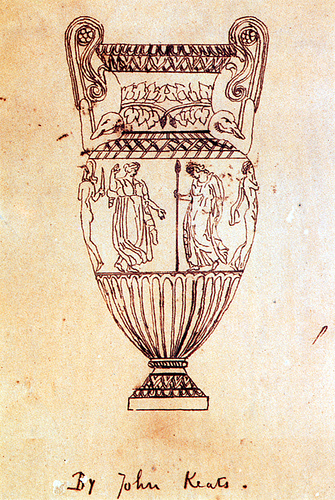Ekphrasis (Greek: ἔκϕρασις) is traditionally a literary description in detail of a painting, sculpture or other work of visual art. Perhaps the most famous ekphrastic poem is 'Ode on a Grecian Urn' by John Keats (1819).
As part of their final poetry portfolio, the students of the WRIT2100 Creative Writing: Poetics course were asked to write an ekphrastic poem responding to an object or artwork from one of UQ's museums.
Join us to come and hear the creative work of some of these students who have responded to objects in the Antiquities Museum's collection at a lunchtime session.

Excerpt from Ode to a Grecian Urn
By John Keats (1819)
O Attic shape! Fair attitude! with brede
Of marble men and maidens overwrought,
With forest branches and the trodden weed;
Thou, silent form, dost tease us out of thought
As doth eternity: Cold Pastoral!
When old age shall this generation waste,
Thou shalt remain, in midst of other woe
Than ours, a friend to man, to whom thou say'st,
"Beauty is truth, truth beauty,—that is all
Ye know on earth, and all ye need to know."
Event image by John Keats (1795-1821), licensed under CC BY-NC-SA (wikimedia commons, Flickr). Cropped from original.
Venue
Forgan Smith Building (1)
The University of Queensland
St Lucia Campus
